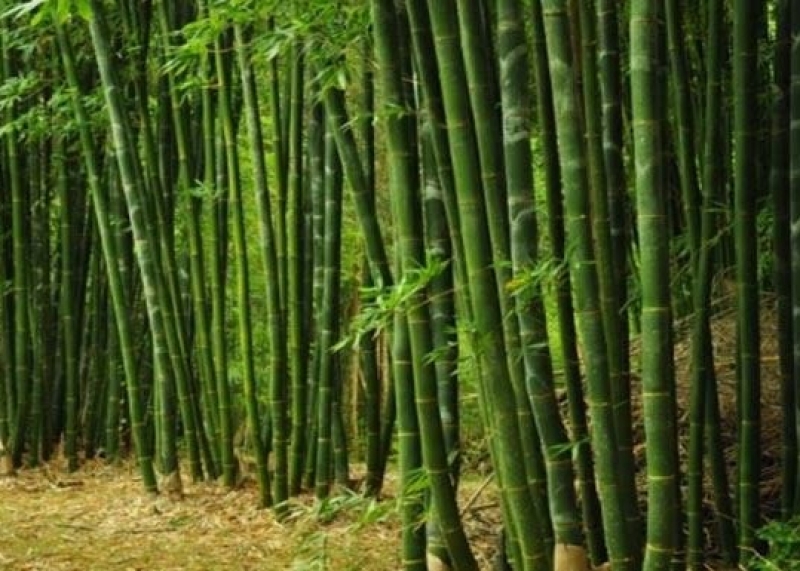- Bangladesh’s Apparel Exports to US Hit $7.34bn in Decade |
- UN Chief Urges Urgent Aid Boost Amid Global Crises |
- Bamboo brings new life to Madaripur’s barren lands |
- Iran nuke program set back years with airstrikes: CIA says |
- 4,604 crimes in 1 week - Violations target Al-Aqsa Mosque |
Bamboo brings new life to Madaripur’s barren lands

Bamboo brings new life to Madaripur’s barren lands
Madaripur, June 30 - Once unused and overlooked, the lands of Madaripur are now covered in green bamboo, marking a quiet but remarkable return to farming.
A green revolution is silently unfolding across this south-central Bangladeshi district, one not of slogans and speeches but of shoots and soil, transforming once infertile terrain into flourishing pockets of prosperity.
Fuelled by the soaring demand for bamboo in household use, construction, and the cottage industries, the humble grass has emerged as a symbol of resilience and economic rebirth.
Across five upazilas, over 5,000 farmers are reaping the benefits of this verdant transformation, cultivating bamboo on sandy, previously unyielding land—drawn by its low investment needs and promising returns.
“This is not just farming—it’s revival,” said Delwar Hossain Khan of Kalikapur village in Sadar upazila.
“Bamboo farming requires little capital but offers good profit. That’s why people in rural areas are turning to it,” he said.
Indeed, the math is simple yet compelling. One can plant 60 bamboo saplings per bigha—about 30 decimals—at 14-hand intervals.
With nurturing care and judicious fertilisation, new shoots begin to appear within three to four months.
Each clump, under proper maintenance, can yield at least 100 mature bamboo stems annually.
The transformation is as visual as it is economic. Vast stretches of green now carpet what were once dust-coloured tracts. In 60 unions across the upazilas of Sadar, Shibchar, Kalkini, Dasar and Rajoir, bamboo cultivation is no longer a fringe activity—it is a way of life.
Veteran freedom fighter Eskandar Madbor, aged 75 and a resident of Mostafapur, reflected with quiet pride, “From household furniture like chairs, tables, and cupboards to traditional fishing tools and decorative items — bamboo is now everywhere. As demand has gone up, prices have too. One bamboo sells for at least Tk 200 in today’s market.”
His words are echoed in the bustling betel leaf plantations of Kalkini, where bamboo forms the backbone of a thriving local economy.
Khalilur Rahman of Chorar Airkandi pointed out, “Our upazila alone has 809 betel leaf plantations, each of which is heavily dependent on bamboo. To build a single betel leaf farm at least 233 bamboos are required.”
No longer just a building material or a rustic convenience, bamboo has emerged as a multipurpose marvel.
Farmers are increasingly abandoning traditional crops in favour of the hardy green stalks, which now serve functions as varied as house posts, garden trellises, and reinforcements for rural road embankments.
Sohrab Kazi, another bamboo cultivator from Sadar upazila, shared his gains with a quiet smile,“I earn around Tk 25,000 annually just by selling bamboo.”
Not far from him, his neighbour Polash Kazi nodded in agreement. “This year alone, I’ve made Tk 35,000 from bamboo sales.”
The impact stretches beyond individual farmers. In the heart of Madaripur town, bamboo trader Telam Fakir shared a striking estimate, “At least 1,000 people in Sadar upazila have become self-sufficient through bamboo cultivation.”
From a broader perspective, the district’s agricultural landscape is undergoing a tectonic shift. Babu Santosh Chandra, Deputy Director of the Department of Agricultural Extension in Madaripur, confirmed, “Currently, around 10,000 hectares of land are under bamboo cultivation in the district. It’s significantly boosting the financial stability of local farmers.”
This tale of green resurgence is not just about economics—it is about empowerment, sustainability and the quiet determination of rural communities reclaiming their soil and futures.
With every bamboo shoot that rises from the earth, so too does the hope of a greener, more prosperous Madaripur. - UNB

